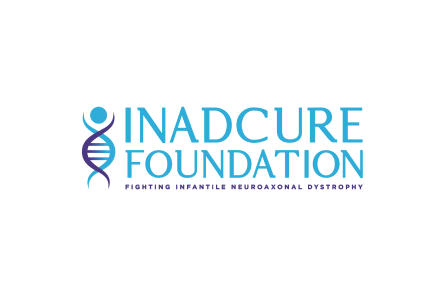INADcure Foundation
Cycle 1
INAD stands for Infantile Neuroaxonal Dystrophy, otherwise known as PLAN (phospholipase associated neurodegeneration). It affects the part of a nerve cell that carries messages from the brain to other parts of the body. INAD causes loss of vision, muscular control, and mental skills.
Last updated 04/30/2025
Clinical
Disease Class
Neurological diseases
Body Systems
Cardiovascular / Circulatory
Digestive
Hematopoietic / Lymphatic / Immune
Muscular / Skeletal
Nervous / Sensory
Renal / Urinary / Excretory
Reproductive
Respiratory
Organs
Adrenal glands
Bladder
Bones
Brain
Connective tissue / joints
Ears
Esophagus
Eyes
Heart
Intestines
Kidneys
Lungs
Mouth / teeth
Muscles
Nose
Pituitary glands
Spinal cord
Stomach
Throat/pharynx
Trachea, cervical
Known Genetic Link
Yes, there are both genes that cause the condition and genetic factors that contribute
causative_genes
PLA2G6
contributory_genes
None specified / unknown
Type of Inheritance
Autosomal recessive
Newborn Screening
No
Disease Mechanism(s)
Abnormal protein degradation
Lysosomal defects
Pathogenic mutation
Age of Onset
Early childhood (age 1+-5)
Infancy (age 0-1)
Average Age at Diagnosis
Early childhood (age 1+-5)
Life Expectancy
Middle childhood (6-11)
Affected Sex(es)
Female
Male
National Prevalence
1001-10000
Global Prevalence
10000+
National Incidence
Less than 10
Global Incidence
Less than 10
Populations and/or ancestry with higher prevalence
Higher prevalence in East Asian population ○ East Asian: 1/238 (prevalence: 1/227,041) ○ Korean: 1/163 (prevalence: 1/106,626) ○ Other East Asian: 1/316 (prevalence: 1/398,910) Slightly higher prevalence in African and Bulgarian population
Symptoms / Phenotypes
autonomic nervous system problems
cognitive decline
developmental delay
hearing loss / hearing impairment
hypotonia
movement disorders / ataxia / tremor
seizures / epilepsy
sleep disorders
spasticity
speech problems / apraxia
vision problems
Biomarkers
Diagnostic
· Cerebellar hypoplasia via MRI, hypotonia
Monitoring
· Loss of trunk control
Existing Therapies
None
Organizational & Research
Cell Lines
Fibroblasts
iPSCs
Cell Lines, Institution
New York Stem Cell Foundation
Cell Lines, Involvement
Funded
Own
Cell Lines, share
Some of our cell lines are freely available
Disease Model
Mouse
Disease Model, Involvement
Consulted
Funded
Disease Model, share
Some of our disease models are freely available
Clinical Trial Role
Meeting with regulators
Recruitment and outreach, patients
Recruitment and outreach, trial sites/physicians
Biobank, Institution
New York Stem Cell Foundation
Oregon Health and Sciences University (OHSU)
Biobank, Involvement
Funded
Center of Excellence, Institution
None
Registry
Yes, we have a registry that we created
Data Collected, Registry
Patient contact info
Data Entered by, Registry
Other
Platform, Registry
Other
Natural History Study
Yes, we have collaborated on a natural history study
Data Collected, Natural History Study
Patient-reported outcomes
Prospective data
Platform, Natural History Study
Not specified
FDA Patient Listening Session
No
FDA Patient-Focused Drug Development (PFDD) Program
No
ICD Codes
No, we do not have any ICD codes
Diagnostic Guidelines
No
Science Advisory Board Policies
Yes, willing to share SAB policies
Research Network Policies
Does not have a CRN
Research Roadmap
Yes we have a Research Roadmap, and will share policies
International Chapters
None
International Partners
Europe
South America
